Camping as a family can be a lot of fun, but it can also be a lot of work. These 33 family camping hacks will help you make camping easier and more enjoyable. Using these camping tips will allow you to have more fun while tent camping, car camping, and general family camping. Let us know what you think and if there are any other family camping hacks or tips you feel should be added to the list.
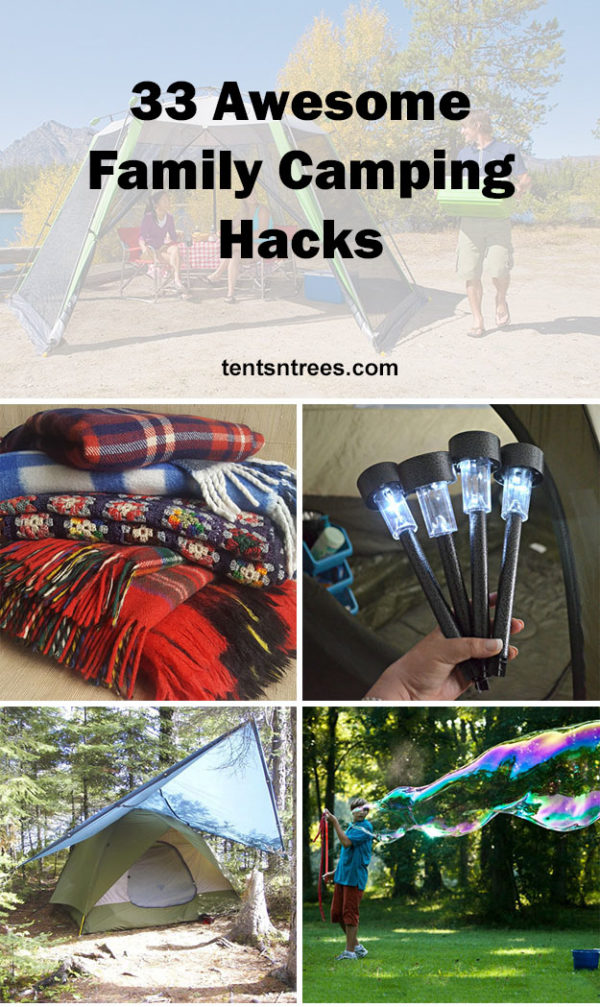
1. Use glow sticks as nightlights
Using glow sticks is one of the camping hacks that our kids really enjoy. Glow sticks are a great way to provide a little light in your tent that isn’t too bright for sleeping. Just hang one or two in your tent, and you will have just enough light to see if you need to get up in the middle of the night.
2. Arrive before dark
Arriving at your campsite before dark will make things much easier. Setting up a tent and other necessities becomes a lot harder when you try and do it in the dark. It’s a good idea to plan and arrive at least 2 hours before sunset. That should give you enough time to set up your gear and get settled before it gets too dark.
3. Place dry firewood under your car
It’s a good idea to place dry firewood under your car so that if it rains, it will remain dry. There is nothing worse than waking up on a cold morning and not having any dry wood to start a fire. Keeping wood under your car will ensure it’s always dry and ready to use for your next fire.
4. Use fans inside your tent
When camping in warm weather, heat can be a real problem. A great tip is to use a couple of tent fans. Using these fans can make a real difference and make sleeping a lot more pleasant. You can find lots of great tent fan options on Amazon for really great prices.
5. For cold weather, use a heater
When camping in cold weather, it really helps to have a small heater going in your tent when you are going to bed and waking up. This makes it really easy to get kids changed and in or out of their sleeping bags. Mr. Heater is probably the most popular option, but there are a bunch of options you can choose from on Amazon.
If you have access to electricity, then it is super easy to use any small space heater. If you don’t have access to electricity, then you can use a propane header like Mr. Heater Buddy. I don’t sleep with the heater running because propane heaters can produce carbon monoxide, but I run it a little before we go to bed and right as we are waking up. Be cautious with propane heaters to avoid carbon monoxide. Make sure to have proper ventilation, use a carbon monoxide detector, and I wouldn’t recommend sleeping while the heater is running.
6. Remove large objects on your tent site
Removing large objects like pinecones, sticks, rocks, etc. will ensure you have a flat area to sleep in. While we remove the large objects, I actually like to keep a layer of pine needles (if you are camping in the pines) under the tent. It provides a thin layer of cushioning and makes things a little more comfortable.
7. DIY Camp Shower
This is one of my favorite family camping hacks. You can create your own camp shower/washing station. Use a 2-gallon sprayer with a kitchen sprayer attached. You can even paint it flat black to absorb solar heat. This is a lot cheaper than buying a real camping shower and makes it super easy to get kids clean after a long day of playing.
8. Solar-powered string lights
A solar-powered string of lights is a great way to light up your campsite or tent in the evening. You won’t have to worry about having access to electricity or bringing extra batteries. There a quite a few options to choose from on Amazon, and you can get them in different lengths, depending on the area you are wanting to light. Personally, this set of lights has worked great for us.
9. Bring a rug for the inside and outside of the tent
Dirt is always an issue when camping. If you want to try and cut down on the amount of dirt that ends up in your tent, bring a rug for both the inside and outside of your tent. Simply wiping your feed before and after getting in your tent will help a lot to control the dust and dirt that ends up in your tent.
10. Freeze gallons of water to use in your ice chest
Instead of buying a bag of ice to put in your cooler, freeze a gallon or two of water and place it in your cooler. It will last longer than a normal bag of ice, it won’t fill up your cooler with water, and once it melts, you will then have a gallon of water to drink.
12. Use swimming noodles on the guy lines of your tent
No one likes tripping of the guy lines of the tent. Cut up a couple of swimming pool noodles and place them over the guy lines. It will make them a lot easier to see, less likely to trip over, and is a very easy camping tip.
13. Lots of bug repellent
Having to deal with mosquitoes and other insects is never fun. Make sure you bring enough bug and insect repellent for your entire trip. Additionally, it’s not a bad idea to bring a few insect traps for inside your tent and around your campsite. One great campsite option is the Thermacell Patio Shield. This will give you a mosquito-free area, which is awesome for an eating area or a general gathering area.
14. Bring sunscreen and use it
Nothing is less fun than dealing with kids who have a sunburn. While camping, kids will be out in the sun most of the day. Using sunblock throughout the day will prevent sunburns and eliminate the complaining that comes from kids when they have a sunburn. If you get the spray-on sunblock, it is super easy to apply and only takes a couple of minutes.
15. Bubbles for kids
Bubbles are a great way to entertain younger kids. They can spend a long time blowing bubbles and chasing them. If you have slightly older children, you can try a larger bubble maker as older kids tend to have more fun with them.
16. Use a screened-in canopy as a play area
For younger children, toddlers, and babies use a screened-in canopy as a play area. This will keep them from wandering off as well as keep the insects away. Additionally, it makes for a great bug-free eating area when the kids are not playing in them. You can find a lot of options on Amazon, but our favorite one is this one from Coleman.
17. Ensure you have extra blankets
Extra blankets often come in handy. Whether it is cold and the kids need an extra layer to stay warm, or you want to lay out a blanket for a picnic, we always find a use for extra blankets. This camping tip might not seem like a very special idea, but you’ll be surprised how often the extra blankets will come in handy.
18. Lots of baby wipes
Baby wipes aren’t just for babies….they are for everything. Seriously, you will be surprised how useful they are and how many things you end up using them for. Things and kids get dirty when camping, and baby wipes will help you manage that dirt and keep things and kids at least moderately clean.
19. Bring sidewalk chalk
If you will be camping in a designated campground with roads, sidewalk chalk is a great item to bring with you. Kids love to draw and color. What better than to let them draw on the ground with chalk and spent time creating and using their imagination?
20. Pre-cook as much food as you can
Cooking from scratch while camping can be difficult. When possible, pre-cook as much food before your trip and heat it up at your campsite. There are a lot of great recipes that make cooking while camping a lot easier. Try a few out and find a few meals that work for you and cut down on the amount of cooking you have to do while camping.
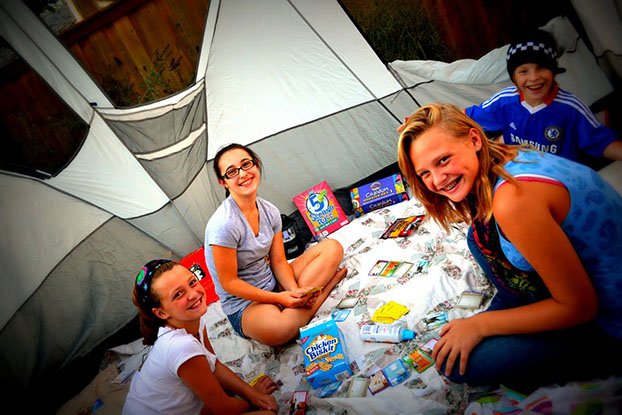
21. Plan games and activities
Having a handful of games to play as a family is a great way to mix up your day and add some additional fun on a camping trip. A couple of board games or card games that your kids enjoy playing are a great option when the sun goes down, and activities become more restricted. Additionally, this is one of the best family camping hacks if you might get rain.
22. Portable potty for really young kids
If you have young kids who are still potty training or still need to go to the bathroom frequently, a kids portable potty is a great item to have. The best use for it will come in the evening when getting ready for bed or in the middle of the night when your child just can’t hold it any longer.
Having a small portable potty for #1 needs is a great way to prevent the need from trekking through the woods in the middle of the night to use the bathroom. I would definitely recommend that this potty be only used for #1 needs. With #2 needs, I’m sorry, you’re out of luck and will need to trek through the woods to the bathroom. You don’t want that smell in your tent.
23. Pack socks and underwear in Ziploc bags
When things get wet, having dry socks and underwear will go a long way helping everyone feel more comfortable. Hopefully, you’ll stay dry but if it does end up raining and your gear gets wet, you’ll be grateful to have some dry socks and underwear for your self and your kids. Packing important items like socks and underwear in Ziploc bags will ensure they stay dry if things happen to get wet.
24. Suspend a tarp over the top of your tent
Having a tarp over the top of your tent will help you in a couple of different ways. If you are camping in warm weather, adding some shade directly over your tent will help to noticeably lower the temperature inside your tent.
Additionally, if it does end up raining having that extra layer of protection will help to safeguard all your camping gear from getting wet. You can find lots of different sizes on Amazon, which allows you to get the best fit for your situation. Additionally, you can find more tips about rainy camping in our post with tips for camping in the rain.
25. Keep a rolling checklist
Start a camping checklist and make sure you keep it for your next camping trip. It is much easier to start with what you had on your last outing and add to or subtract from it. It will help you ensure you don’t forget anything and within a couple of camping trips, you will have an ultimate camping checklist customized to you and your family.
26. Dryer lint inside used toilet paper rolls
A super-easy way to start a fire is to prepare some free firestarters from things you usually throw away. Save a few of the cardboard toilet paper rolls from used rolls and fill them with dryer lint from your dryer.
These DIY firestarters light easy and are a great way to get your campfire going without having to search around for lots of kindling.
27. Bring solar stake lights
Taking kids to the bathroom in the middle of the night is never easy but you can make it easier with solar-powered stake lights. Use these stake light to create a path to the bathroom so that you don’t have to worry about finding a flashlight in the middle of the night.
Additionally, these stake lights offer a great way to light your campsite at night. If you have younger kids, it is a great way to create a perimeter around your campsite and tell your kids they are not allowed to go past the lights when it is dark.
28. Manage dirt with a handheld broom with a dustpan
No matter how much you try, when camping with the family, you are going to end up with a lot of dirt in your tent. Bring a small handheld broom and dustpan to quickly clean up the dirt that is tracked in.
You will be surprised at the amount of dirt that finds its way into the tent each day. A quick clean once a day can keep that dirt under check.
29. Extra rope always comes in handy
Whether you need to make a clothesline, hang food in the air at night, or whatever else, extra rope is a great item to bring along. We always find a use for it and are always glad we brought it with us.
30. Bring a pack n play or toddlers
If you have an infant or young toddler, consider bringing a pack and play. A pack n play is a great place to have your infants sleep at night. Similarly, you can bring it out during the day, which gives you a place to play them down while you need to do other things.
31. Use a warm bunting for toddlers
Keeping infants and toddlers warm at night can be challenging because they don’t stay under blankets or in sleeping bags. A great option is to find a bunting that is suited for the temperatures you will experience.
Buntings are great because it is basically a wearable sleeping bag for infants and young children. We’ve used buntings on multiple occasions and they have worked great for our needs.
32. Bring medicine for common ailments
Inevitably our kids end up getting sick at the most inopportune times. Being prepared for some of the more common ailments will go a long way. We always bring extra medicine for the kids. Medicine for colds, headaches, coughs, diarrhea and upset stomach are the most common medicines we bring.
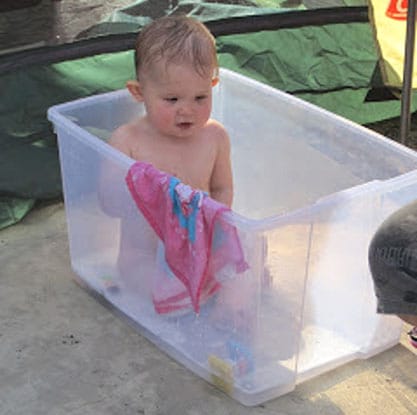
33. Plastic storage bin bathtub
All kids get dirty, but young children tend to get the dirtiest. They end up rolling around in the dirt and in some cases even trying to eat it. Keeping them reasonably clean can be a challenge. An easy solution for bathing is to simply bring along a plastic storage bin as a makeshift bathtub. It is portable, light, and inexpensive.

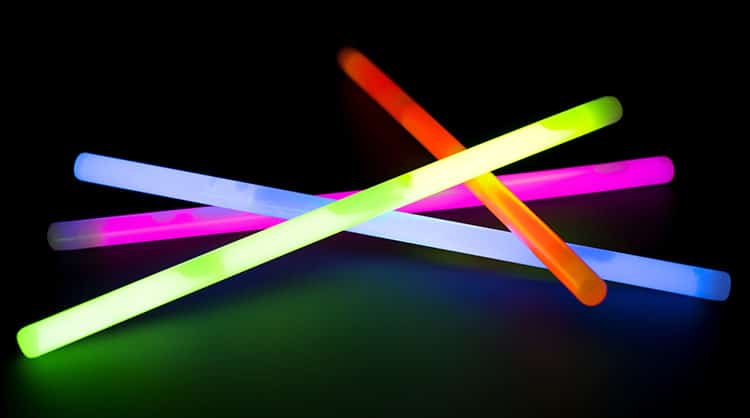
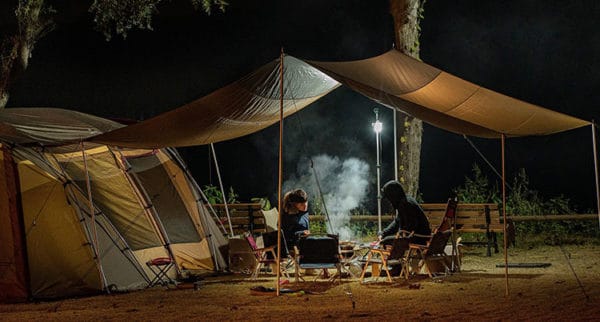
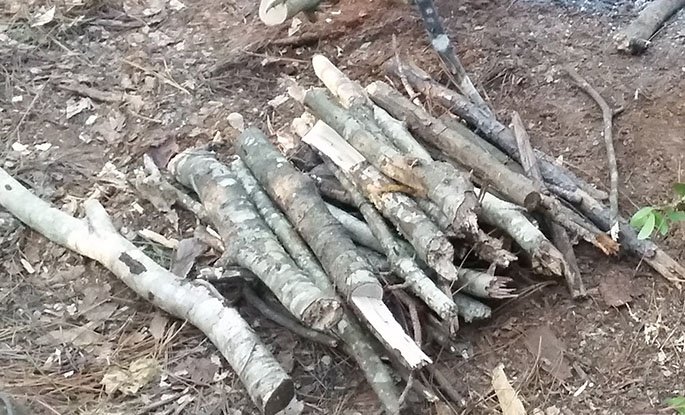
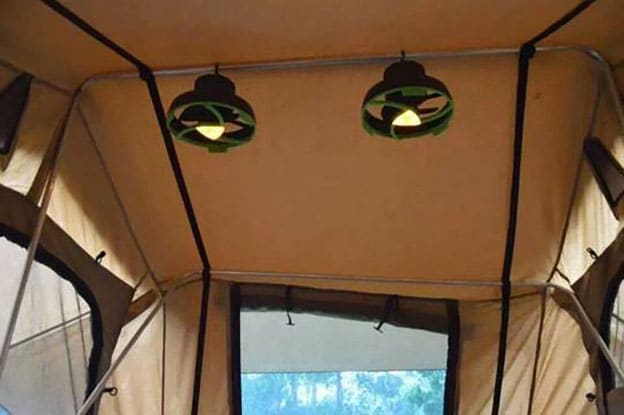
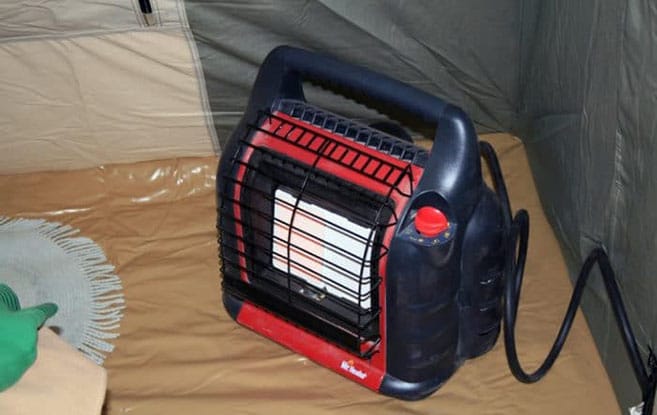
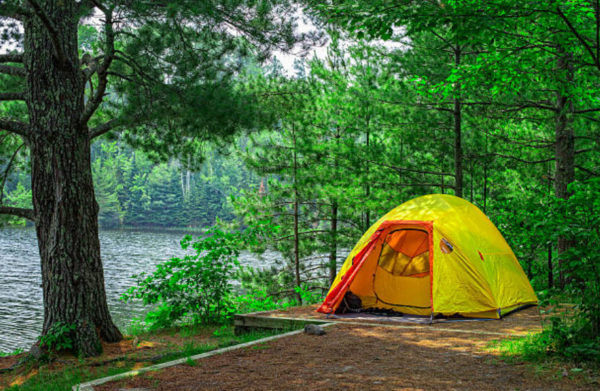
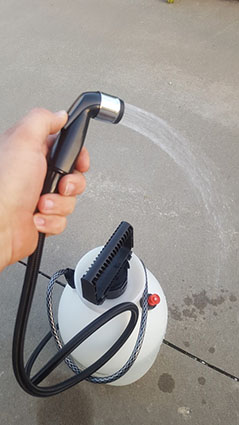
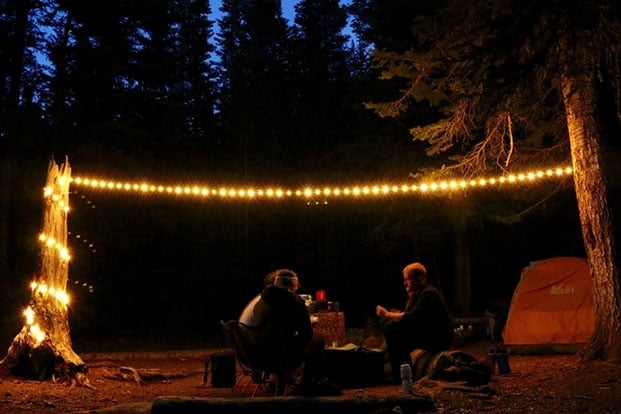
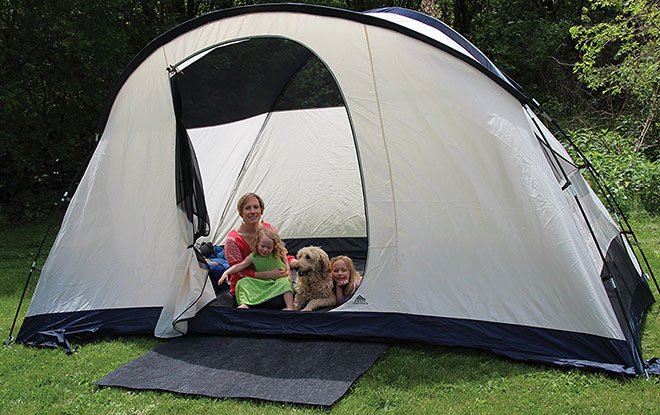
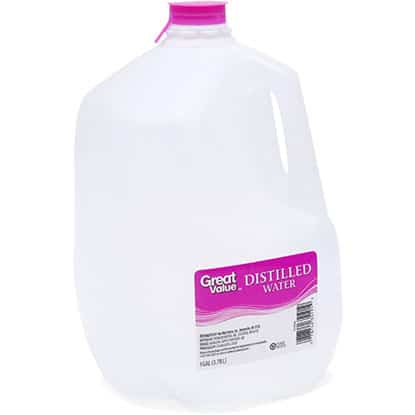
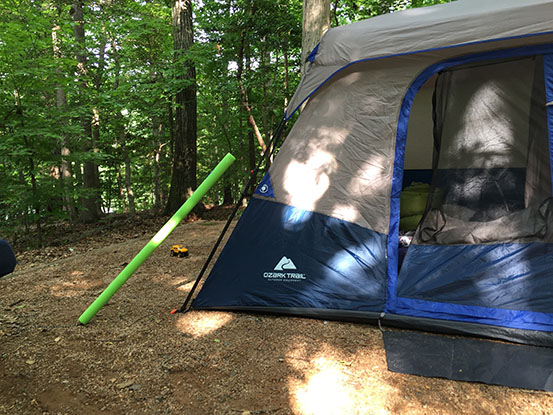
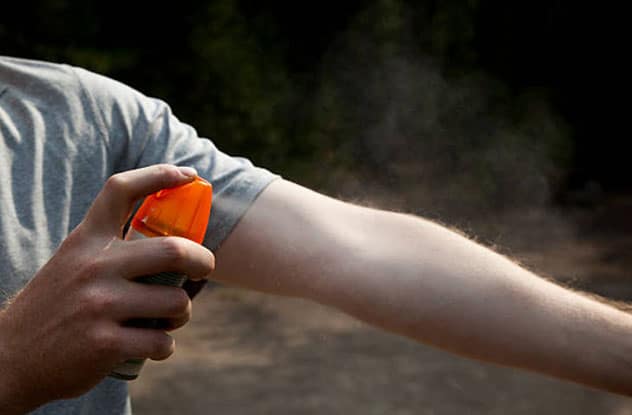
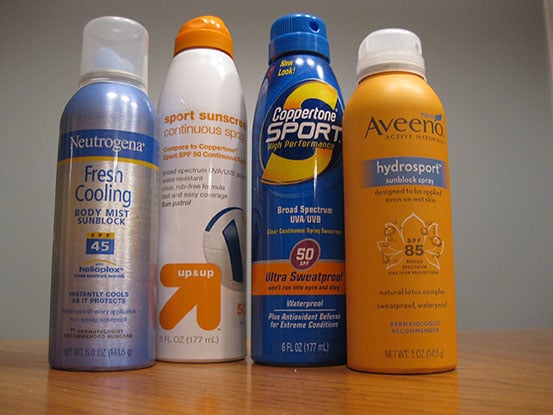

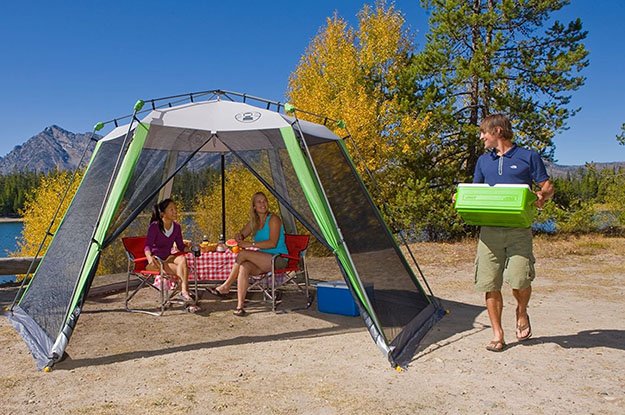
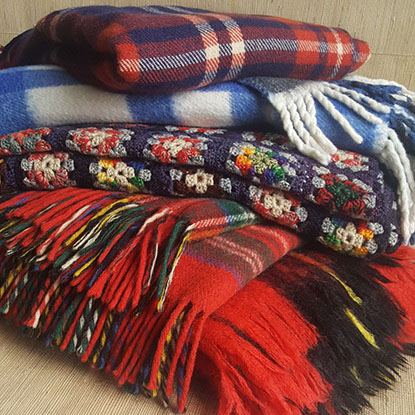
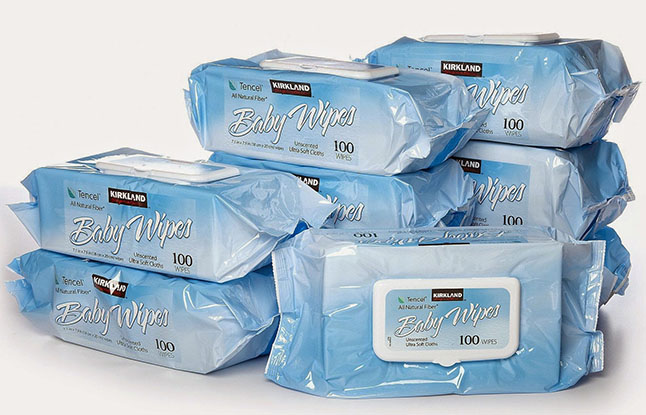
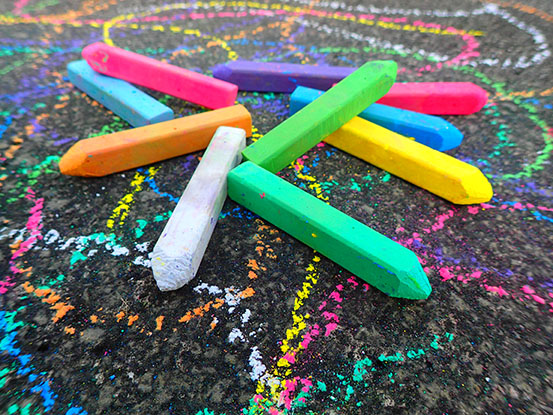
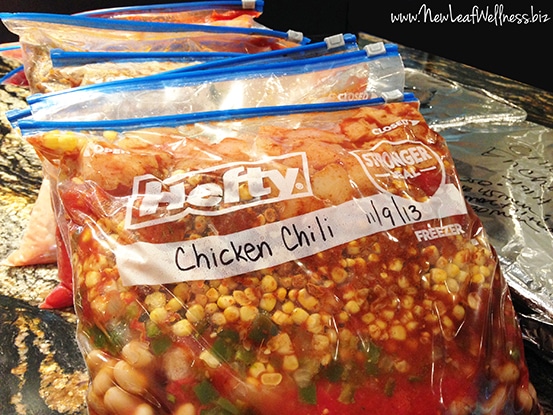
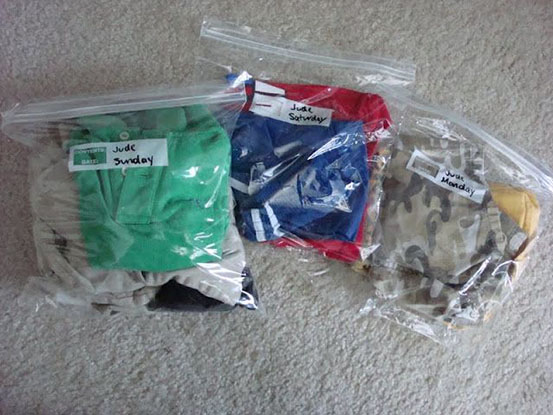
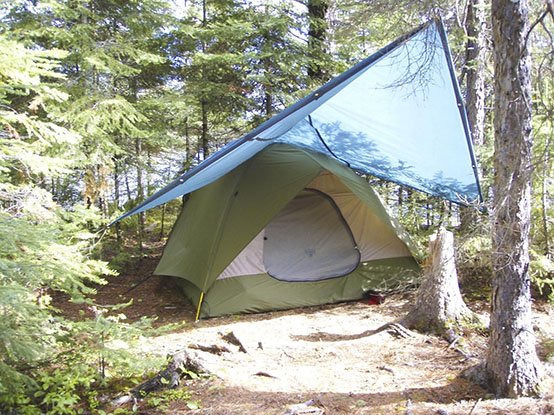

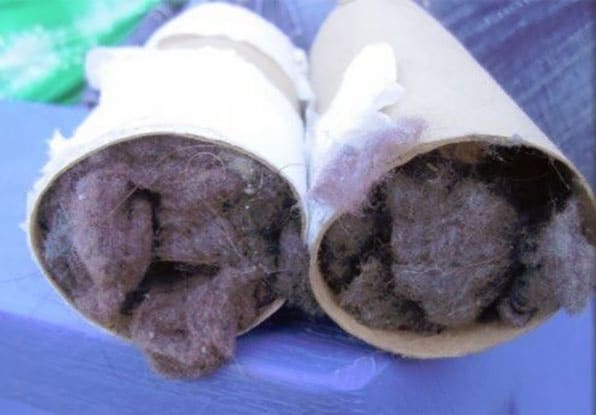
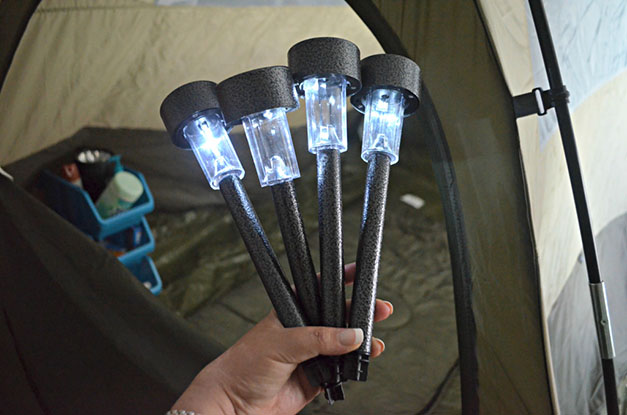

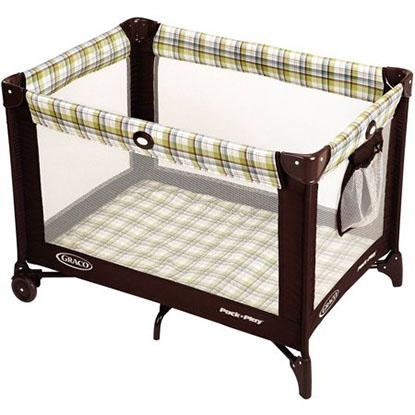

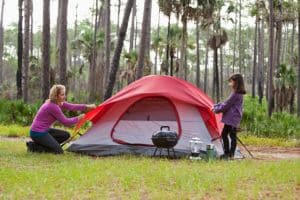
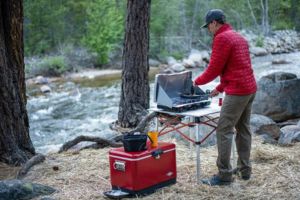
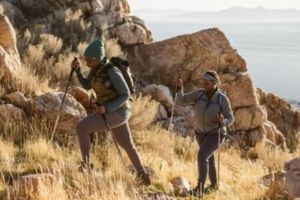
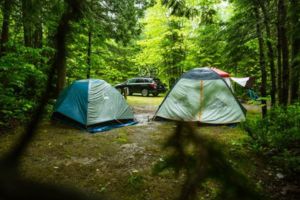
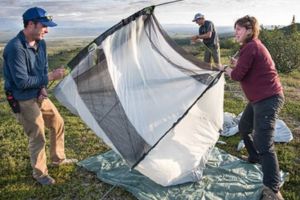
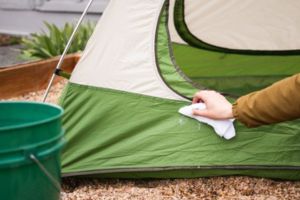
Some wonderful ideas here. Thank you for sharing your knowledge- tips & tricks
Debbie, glad you like them. I hope they help you get your family out camping.
I would add to use glow necklaces for the kids at night. Easier for little ones to keep up with than flashlights when they’re walking around the site and easier for mom to keep track of them all.
Also, a handwashing station is nice to have you can go as simple as those 2.5 gallon water jugs from the grocer, use a cooler jug specifically for handwashing, buy a spigot for 5 gallon jugs for when you don’t have access to running water, or what I eventually did and fashion a tap that you can hook up to a hose at your site.
Tamika, those are some great ideas. A handwashing station would go a long way to help keep the kids relatively clean.
I attach a nylon stocking with a bar of soap inside to the spigot
Use a large empty laundry soap jug turn it on the side. Works great and already has a spigot!
Don’t forget the Band-Aids, first aid antibiotic ointment and hydrogen peroxide as there most likely will be some cuts and scrapes! My daughter fell off her bike when she slid in the gravel on the blacktop road while we were camping years ago and cut her knee pretty badly. Thankful that I had these first aid items in the camper!!!
Great advice Patty! You definitely don’t want to have an injury while out camping and not have any way to take care of it.
I have been camping most my life and half these tips I have used in the past. But hands down the toilet roll and dryer lint has to be the most coolest thing ever. We are going Halloween camping this year and I will most definitely be useing that and a few other things I saw that I like. Thanks!!
It’s going to be my family’s first camping experience. This page gave me a better mindset going in. Ty for the tips and tricks because I didn’t know about none of these issues like dirt in the tent, or the tent lines I’m blind so that will help me keep an eye out for them. The parameter marking with the solar lights gives my boys the visual boundaries while still being functional. Thank you.
Also antihistamine. Bug bites, poison ivy etc can put a damper on camping.
Thanks so much!! These are some great tips.
No problem. I hope they help your family.
Thank you !
Great tips! Thank you I would also add gause and maybe burn cream of some sort or plenty of Neosporin. Our son last year tripped over a rock and burned his hands on the fire pit! It was one of those last minute things we just happened to throw in and were we glad we did! But we will definitely be use those light stakes! Awesome idea!
Brooke, that is a great tip. It is always really important to consider safety first.
Thank you for the great tips and so easy to read. Planning my very first camping trip over the weekend next month with 4 little ones (6, 4, 4, 3 yo) and a small dog. I feel a lot better already.
How many days in advance do you start the camping loading process?
How would you prepare kids to spend the night outside when they have some serious concerns about a bear creeping up on us during the night?
Little background, years ago, my husband and I booked a wild camping lot, we did some hiking (+1 mile) to get there in the Texas heat. Once there, in the middle of a dried out forest and also because of a possibility of being attacked by a wild animal or worst, a snake, no phone signal whatsoever (not talking about WiFi) within minutes we decided to walk back towards our car. Now you can see where our kid’s fear is coming from (never told them this story)
Again thank you!
Felicia, I’m happy to hear that you’re planning a family camping trip next month. I’m sure you guys are going to have an awesome time. We really love camping as a family and always make some great memories.
You asked about when we start the camping loading process. Well, about a week before our trip I start gathering some of the larger items just to make sure we have everything we need. You don’t want to start gathering everything the day before your trip to learn that you are missing a couple of big items and now don’t have time to get what you need.
It’s also a good idea to start planning out your food about a week in advance. This will give you enough time to grab any extra items you need during your normal weekly routine.
The day before the camping trip is when we do the major packing prep. I will get all gear out and pile it up in the garage. We will begin to pack bags and get non-perishable foods all packed up. The morning of the trip is when I actually load everything into the car.
Alright, now for the kids being worried about bears and other animals. What we’ve done with our kids is to explain to them that the animals are more scared of you than you are of them. Which for the most part is true. Encounters with wild animals is not a normal thing most campers have to deal with.
Even if you are a little worried about animals, I’d recommend convincing your kids that there is nothing to worry about. That’s at least what we’ve done with our kids because I don’t want them growing up afraid of the wilderness.
Don’t get me wrong, it is still wise to be aware and take proper precautions. I just don’t want my kids to have a fear of something that is unlikely to happen.
If you are specifically worried about bears, the National Park Service has a great article about bear safety.
https://www.nps.gov/subjects/bears/safety.htmAgain, having problems with bears is not common but here are a couple of precautions you can take.
Do not bring any food into your tent
Keep your campsite clean and store your food away from your tent
If possible hang food in a tree or store it in a bear-proof box (this is a more extreme precaution but if you are camping in bear country it is recommended)
If you do much cooking and your clothes smell like food, change before bed and place those clothes in a box/container away from your tent
Additionally, it wouldn’t be a bad idea to bring some bear spray with you. You’ll then know that if something did happen you have a way to deter a bear or other animal you come across.
I hope these suggestions help and I hope you guys have an awesome family camping trip. It really is a great way to make lasting memories and grow closer as a family.
This is great! I have been camping since I was a kid and go several times a year. Most of these ideas I use but a few I don’t and I am happy to have come across them! Thanks!
When it comes to baby wipes, put them in the cooler and they’re life savers in hot weather. And you can make homemade body wipes by removing the cardboard center from a roll of paper towels. Flatten them as much as possible then put em in a freezer ziplock bag and and water until the whole roll is mildly saturated. And isopropyl alcohol to make antibacterial wipes.
Great article! Felicia I’m not sure about the US but some Canada parks have electric fences to keep out bears and other animals. Lake Louise camp ground for instance. You can check when you’re booking. I thoroughly recommend staying in one of those with your family – maybe until you get used to camping. To be honest that peace of mind is totally worth it.
Terrific Hacks! Thank you! You had me at solar stake lights! Never thought I’d save toilet paper rolls for anything! I’ll save some up now!
Deb, I’m glad you liked them. Yeah, we save up our toilet paper rolls now as well.
Awesome tips! My family and I just went camping for the first time this past weekend. We loved it so much we are going to do it again next month.
The tarp for the rain is a great idea, and the lint for the fire starter!!! I can’t tell you how I can’t wait to use your tips!
I have kids that range from 14 years old to 3 years old so definitely bringing out bubbles game activities. Our tent held up really well with the rain, we needed the tarp to take shelter for the fire pit and our sitting area. We tied the 4 corners or the tarp to a tree, the picture shows a much better solution, so I definitely will be setting up the tarp differently next month! Great tips thanks!!!!!
Anya, I’m really happy you had a great time camping with your family. We definitely encourage you do to it often. We believe it helps families grow closer and build lasting bonds.
By far the most useful link I’ve seen! I use some of these hacks but got some fresh new ideas! Thanks!
Christy, no problem, I’m happy the tips could help.
Great Tips! Thank you!
Great tips, one comment though! Bubbles and tents do not mix, the solvent in bubble mixture destroys waterproofing on tents.
Katie, that is a great tip and definitely something to keep in mind. You don’t want to ruin the waterproofing on your tent.
Cotton ball with some petroleum jelly for fire starting – quick and efficient!
Yes! I always keep baby wipes on hand when camping. This is a great list of camping hacks. I found several new ones I liked but my fav was using swimming noodles on the guy lines of your tent. I bet that will help prevent tripping in the night when you go for a potty run!
Another trick we use in the colder weather is to add plastic sheeting (basic painters plastic tarp) between the tent and the rain fly and securing all 4 corners to the tent poles as low as they reach. Then we run our electric heater inside the tent. The extra layer of insulation helps keep the tent toasty all night.
Would it have to be under the rain fly?
Great tips! One thing I would add. with the potty seat; fill a plastic grocery bag with kitty litter and put in the seat. Change after each use. This way it won’t matter if it’s #1 Or #2. Also prevents accidental spills, and absorbs odors! 😊. When my boys were little, I always carried an empty coffee can with kitty litter for those emergencies. My daughter now keeps a potty chair with bags of litter in her car for her girls.
I consider myself a seasoned camper, but I must admit most of these ideas, I’ve never come across or thought about. the rug outside is genius! this year we’ve decided to do our usual family camping trip in our garden if we are not able to head out when summer comes around!
Duct tape…. always have a roll of duct tape with you… it can fix everything, starting on tents tears, broken portable table legs finishing.
Andrew, that is a great tip. I completely agree; it’s surprising how many things you can fix with duct tape.
Thank for your tip! I’ve been camping for approximately 55 years and I’m 65 now! I intend continuing as long as possible! We’re getting ready for a trip in 2 weeks and will use some of your suggestions for kids because two of our grands will be in camp as well. Also I’m getting more clumsy and I’ll be using cut pool noodles on all guide lines. Also love the charcoal in the egg cartons! Thanks and happy camping!
We also use the glow sticks as necklaces for our dogs. Makes them easy to spot if they should accidentally get loose at night. Has worked out great, and I have to admit we have had a dog escape their leash at night. Also, we use the pool noodles for the guy lines and put a glow stick around the bottom of the lines we might trip over. Saved me from falling on numerous occassions.
Wow, this is the most complete guide to camping with kids that I’ve ever seen. Thank you so much for writing it, I’m going to save this for sure! We are camping this summer at least once so this will come in handy. I love all your ideas for keeping the kids entertained, especially that bug watching party 😍. You are awesome.
If you ask me — Baby wipes are one of the most underrated products of this century! There soooo useful!!
I wish I read this before buying my helio shower – what a joke it is no pressure and can not even cary it with water in it or hang it by the strap – Pump spayer looks great
Still enjoying your list in 2022! I’ve got my dryer lint rolls ready for camping this weekend!
A friend of mine introduced us to camping. We had young kids at the time, with our youngest being maybe 6-7mos old. She had the great idea to bring an inflatable pool and some toys to keep our crawlers safe and contained and free to move around in!
Thanks for posting practical hacks. I found so many sites that seem their tips are so out of touch, but these are actually useful! Thanks so much
Great tips, and many that I had not seen before. I love the pressure sprayer with the kitchen nozzle! Had never seen that before. I’m also looking forward to trying the dryer lint in the paper towel rollers! Thanks for your tips and insight! Really great stuff!!